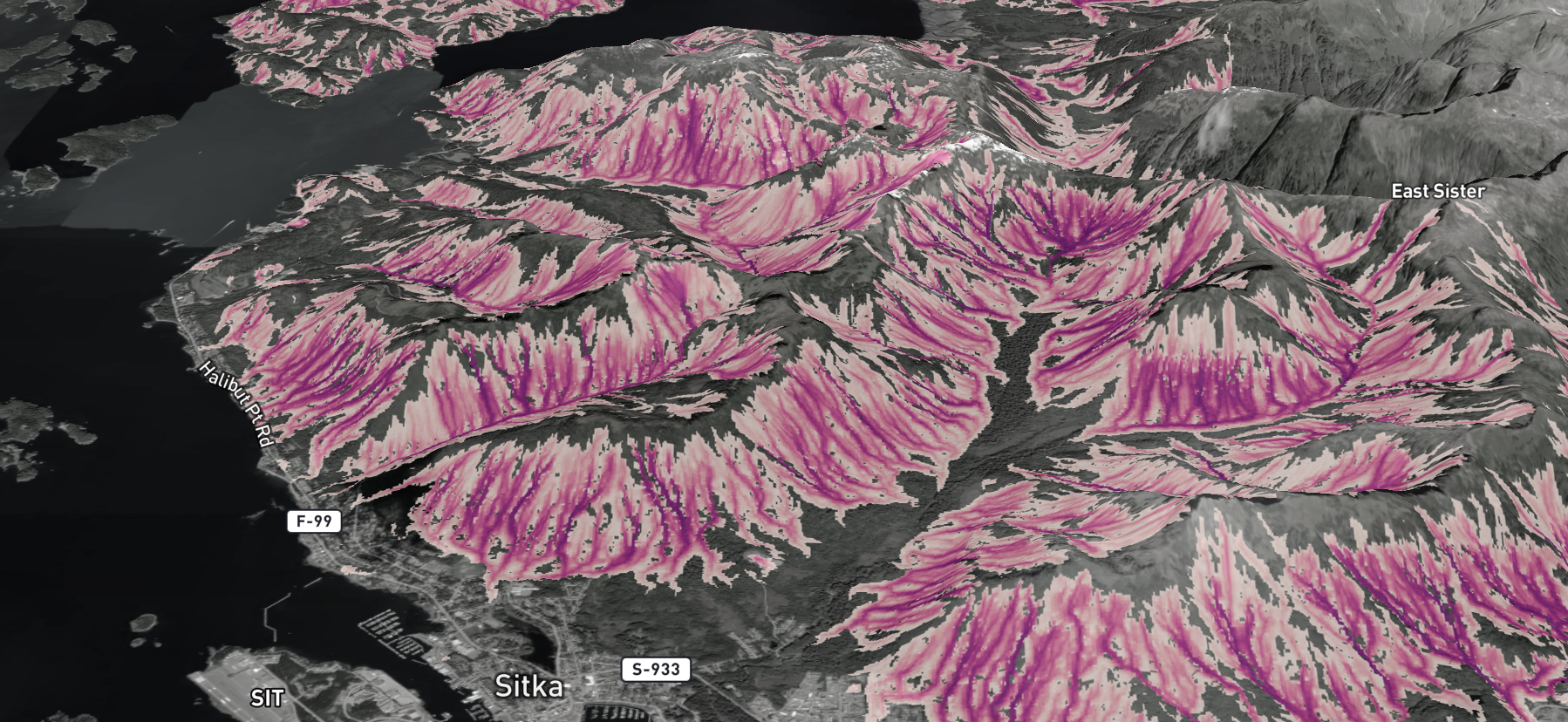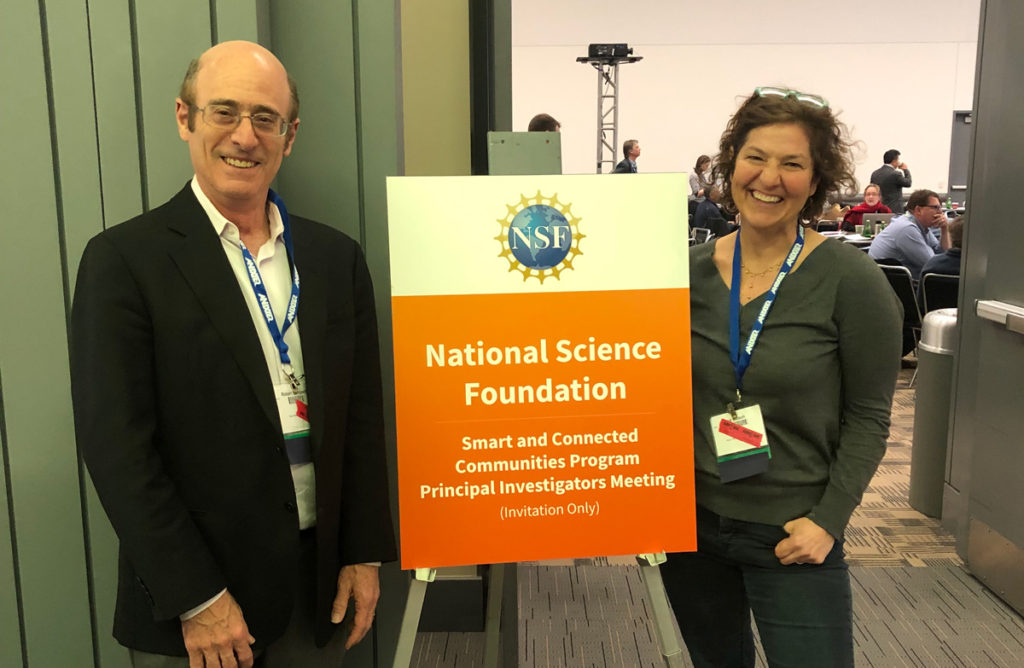
Access the Landslide Warning dashboard HERE
After several phases of community input and meetings with local emergency personnel, the landslide warning system launched in the format of a ‘Landslide Dashboard’ web page in Spring 2022. The website was designed for use on a mobile device, but is accessible from any web browser. The dashboard is a tool that communicates the likelihood of a debris flow happening in Sitka at any given time based on a statistical model developed by a team of scientists. The model compares the conditions at which landslides have occurred in the past in combination with weather forecasts and real-time precipitation measurements to determine the likelihood that a landslide will occur, which is posted as a low, medium, or high landslide risk level. Posted risk levels are combined with recommended actions to guide community members toward emergency preparedness and informed decision making during periods of elevated hazard, with the goal of protecting human life.
The development of the landslide warning system is also showcased in the 2022 Issues article.
The RAND Corporation, a nonprofit research organization whose purpose includes developing solutions to make communities safer and more secure, is working in partnership with the Sitka Sound Science Center, the University of Oregon, the University of Southern California, Sitka Tribe of Alaska, and the Division of Geological and Geophysical Surveys and in collaboration with the National Weather Service, Terrain Works, U.S. Geological Survey, and U.S. Forest Service on the development of a landslide warning system (LWS). This three-year long project aims to develop a new sensor network and create communication channels to disseminate landslide risk. Funded by the National Science Foundation (NSF) Smart and Connected Communities (S&CC) flagship program, this interdisciplinary LWS research has three major components: geoscience, social science, and risk management. We see information science at its most innovative here, collecting data from historical records and imagery, hydrologic sensors, and social networks; organizing it into useful information; and helping Sitkans improve their safety, security, and overall quality of life.

Geoscience
The geoscience component of this project is led by Professor Josh Roering and Dr. Annette Patton of the Department of Earth Sciences at the University of Oregon. Determining landslide risk requires accurate and real-time rainfall forecasts and soil moisture conditions. Working with the Division of Geological and Geophysical Surveys (DGGS), Annette and Josh are designing a sensor network that will monitor soil moisture near potential landslide locations on the hillslopes above Sitka. Real-time monitoring of slope hydrology combined with weather predictions enable improved landslide warning. From this data, Terrain Works has developed a landslide runout model map. Click here for an article featuring Josh and the research group’s plans.
Social Science
In our diverse population, warnings and information about landslide risk needs to reach those with and without internet or cell signal, with varying physical abilities, at any time of day. Senior Behavioral and Social Scientist Ryan Brown is studying how messages travel through town so that a landslide warning can reach the right people in the least amount of time. Researchers will be conducting social network surveys in Sitka so that they can design a warning system that builds on existing information channels and patterns of communications – and reaches as many Sitkans as possible. This will involve interviewing a sample of Sitkans using the Egoweb platform.
Risk Management
The risk management aspect of this project involves helping the community inform the design of a landslide warning system that best serves their needs. For instance, what is the most appropriate balance between providing reliable warnings without giving too many false alarms? How many false alarms is too many false alarms? Should everyone receive the same warnings or should warnings be customized? This aspect is led by Director Robert Lempert at the Pardee Center for Longer Range Global Policy and the Future Human Condition and Principal Researcher at RAND. Thank you to the National Science Foundation for its support under the Smart and Connected Communities program, grant number 1831770 – SCC.
Resources
Award Abstract